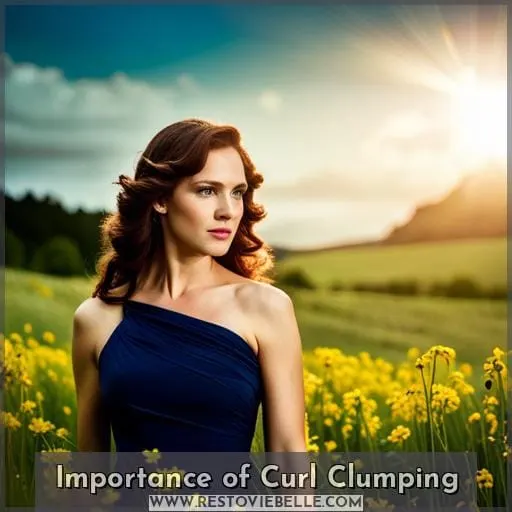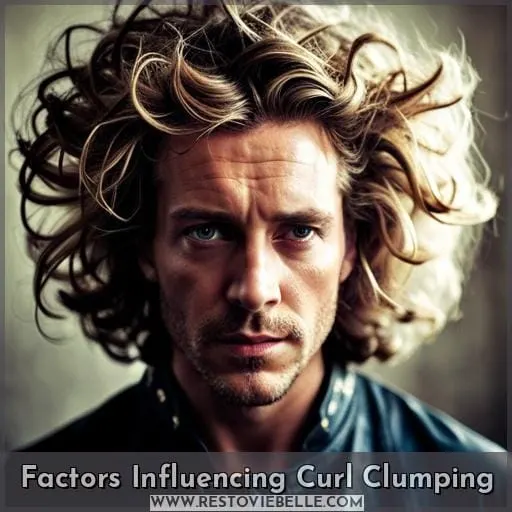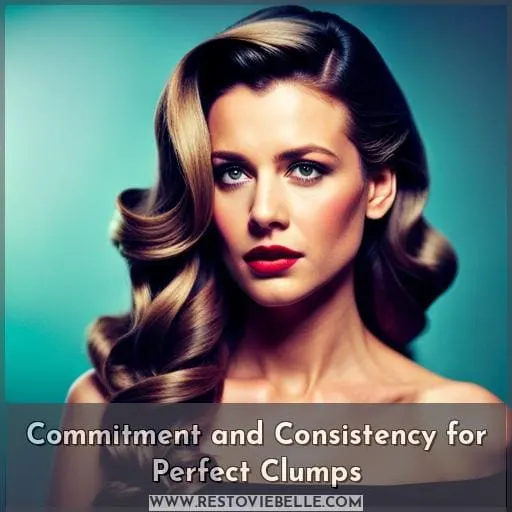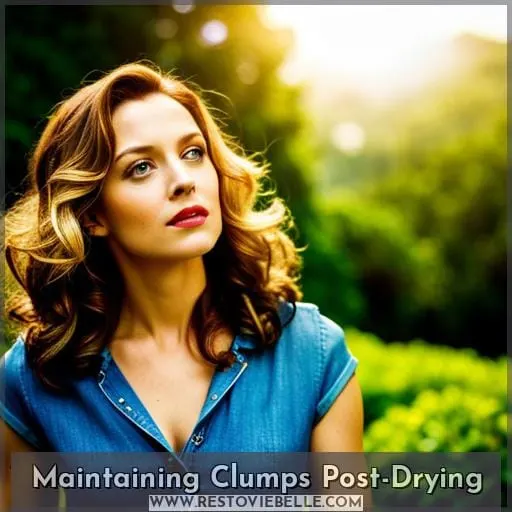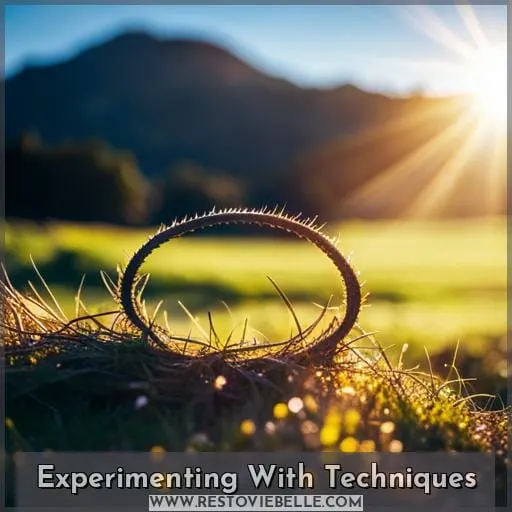This site is supported by our readers. We may earn a commission, at no cost to you, if you purchase through links.
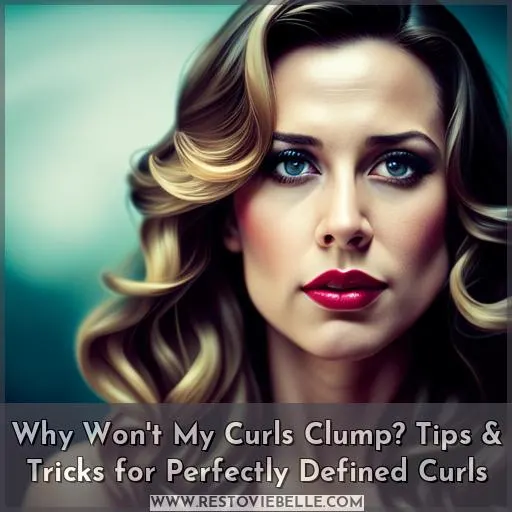 Are you frustrated with loose, undefined curls? Have your attempts to achieve those perfectly clumped locks been unsuccessful? There’s nothing more disheartening than spending hours perfecting your mane only for it to fall flat.
Are you frustrated with loose, undefined curls? Have your attempts to achieve those perfectly clumped locks been unsuccessful? There’s nothing more disheartening than spending hours perfecting your mane only for it to fall flat.
But never fear! With a few tricks up your sleeve and some knowledge about curl clumping, you can be on the road towards achieving the lusciously defined spirals of which you have dreamed. Let us take an in-depth look at why won’t my curls clump and how to get them looking their best.
Table Of Contents
- Key Takeaways
- Importance of Curl Clumping
- Factors Influencing Curl Clumping
- Deep Conditioning and Hair Health
- Commitment and Consistency for Perfect Clumps
- Detangling Techniques
- Transitioning to Cold Water
- Maintaining Clumps Post-Drying
- Experimenting With Techniques
- Engaging in the Curl Community
- Frequently Asked Questions (FAQs)
- Conclusion
Key Takeaways
- Proper curl clumping techniques
- Medium-length layers or straight cuts enhance clumping
- Consider porosity, density, and humidity for product selection
- Experiment with methods, products, and moisture
Importance of Curl Clumping
Discover the secrets to unlocking perfect curls by understanding the importance of curl clumping and finding out what techniques and products work best for you.
Clumped curls showcase jaw-dropping definition, shine, and movement that are highly desired. Curl clumping is when strands group together in defined bunches, creating a fuller look with more volume.
This can be achieved through various means, such as haircuts that promote medium-length layers or straight cuts, along with proper product selection based on porosity, density, and humidity levels. Balancing moisture and protein is also important, as well as using application techniques like upside-down applications, sectioning, and scrunching.
During the post-shower care and styling process, it is crucial to focus on the roots. Additionally, consistent deep conditioning treatments help keep hair healthy, while gradually transitioning to cold water throughout your wash routine adds further hydration, ensuring frizz-free locks.
Don’t forget to seek expert advice from stylists who understand your needs. You can also try LUS’s free curly challenge for tailored guidance to unlock your full curl potential!
Factors Influencing Curl Clumping
You may have heard about the importance of curl clumping, but do you know what factors influence it? Haircut impact, product selection and confusion, balancing moisture and protein, proper application techniques, post-shower care for clumps, as well as hydration and styling techniques all play a role in why your hair won’t stay clumped.
Haircut Impact
Choose the right haircut and you’ll get those clumps popping! Medium-length layers, straight cuts, skip curl method, slide cutting – these are the keys to success. Product selection matters too; work with a curl specialist for best results. Hairstylist consultation is a must for why won’t my curls clump issue.
Product Selection and Confusion
Navigating product selection for your curls can be confusing. Understanding how porosity, density, and humidity play a role in finding the right products is key to clumping success. Trial and error, researching tips from the curl community, and understanding water’s effect on your curl pattern are essential steps when selecting deep conditioning products.
Balancing Moisture and Protein
Balancing the right amount of moisture and protein in your curls can be like walking a tightrope – finding that perfect balance for defined clumps! Try limiting proteins to 1-2 times per month. Glycerin reactions vary, so experiment with products and seek stylist advice. Avoid dry or humid weather; hydrate thoroughly and use cold water for reduced frizz.
Proper Application Techniques
Applying products correctly is essential to achieve desirable clumps. Master the techniques for perfect curls: selection, application, moisture balance, and curl care.
Post-Shower Care
After you shower, tend to your curls with gentle TLC for long-lasting lock definition and shine. Use a microfiber towel carefully to remove excess water from the scalp while protecting hair. When styling, focus on roots for clumps that last; use conditioner application techniques like upside-down methods and sectioning, plus stylers such as glycerin or protein products.
Hydration and Styling Techniques
You can enhance curl definition and shine with thorough hydration, cold water transition for reduced frizz. Try the Glide or Rake & Shake techniques – results after one session! Product selection, application methods, and deep conditioning method all affect the outcome.
Balance moisture and protein; saturate hair with water to get the most out of styling.
Deep Conditioning and Hair Health
Deep conditioning your curls regularly can help you keep them healthy and well-defined.
Moisturizing tips like using a leave-in conditioner after every wash, avoiding protein buildup from styling products, and choosing the right conditioner for your curl pattern are essential to maintaining beautiful curls.
Heat protection is also important for curl preservation – use in-shower conditioners with heat protectants or serums during blow drying sessions!
Regular trims will get rid of split ends, which can spoil any look you’re trying to achieve.
Most importantly, it’s all about finding the perfect balance between moisture and protein that works best for each individual’s curl journey; experiment with different techniques until you find what works best!
Commitment and Consistency for Perfect Clumps
Maintaining the perfect clumps requires commitment and consistency, so make sure to invest in a good hairstylist and the right products – plus, don’t forget about anachronistic deep conditioning for optimal curl definition.
To achieve your desired curls:
- Balance protein and moisture with cold water transitions.
- Join a free Curly Challenge for expert guidance on styling techniques.
- Follow proper application processes using hands-off techniques.
- Stay mindful of protein sensitivity when transitioning between products or styles.
Liberate your hair from frizziness by taking control of these steps! Plus, always remember that healthy curls require consistent hydration – keep them moisturized with light oiling if necessary for lasting locks!
Detangling Techniques
To achieve the perfect clumps, detangle with care using a wide-tooth comb or bristle brush. Start from the bottom and slowly work your way up to avoid split ends and heat damage.
When styling, be sure to use a low-heat setting on your blow dryer for curl maintenance and enhancement.
Concentrate on using these techniques during each step of your hair routine – from wash day to styling – for maximum results in achieving those lusciously curly locks you desire!
For optimal results, focus not only on brushing but also on hydration levels. This will help keep moisture locked into every single curl strand, making each one look bouncy and healthy.
With dedication, consistency, and following these tips and tricks with an eye towards careful detail, along with accessorizing correctly, you’ll have long-lasting beautiful curls that turn heads wherever you go!
Transitioning to Cold Water
Gradually transitioning to cold water helps lock in moisture and define your curls, so don’t be afraid to take the plunge! The benefits of using cold water include:
- Reduced frizz due to product distribution on hair cuticles.
- Improved moisture retention when styling with products like the Curly Girl Method.
- Enhanced curl definition from product selection that is tailored for an individual’s hair texture.
Using cold water also encourages a healthier scalp as it prevents damage caused by excessive heat. This can lead to fuller, more voluminous locks too! When applying any sort of styling cream or gel while transitioning into colder temperatures, make sure you focus on distributing evenly throughout wet strands and avoid overloading one area, which will result in limpness overall.
Additionally, keep an eye out for buildup that may occur if not properly rinsed off after each use.
Maintaining Clumps Post-Drying
After drying your curls, it’s important to take special care in order to keep those clumps intact and bouncy.
Natural curl pattern enhancement begins with moisture retention: using a microfiber towel or t-shirt after showering will help retain that hydration without disrupting the curl formation.
A stylist’s role is also key for long-term curl maintenance. They can recommend cuts that are best suited for you and your natural hair type.
Gradually transitioning from hot water to cold when washing helps lock in shine and definition while increasing overall scalp health.
Wavy-haired curlies should use their fingers as combs, raking them through waves before scrunching up the ends of strands firmly.
Curly girls benefit from an upside-down application of product followed by squishing motions on wet hair, which leaves curls bouncy yet defined.
For lasting curls, focus on roots when styling, then avoid touching them throughout the day. This will help enhance the beautiful shape and bounce desired by many curly women.
Finally, don’t forget about deep conditioning regularly. Keeping every strand healthy leads to gorgeous, well-maintained clumps over time!
Experimenting With Techniques
Try different techniques to unlock the secrets of perfect curls – let your creativity go wild! Experiment with curl techniques, product selection, and moisture balance. This is key for lasting clumps. Use lightweight products when applying in the shower and transition gradually to cold water for reduced frizz.
Take care of curly hair by deep conditioning regularly and making sure a protein-moisture balance is maintained. Remember that experimentation can be fun while focusing on proper curly hair maintenance for long-term results.
Try scrunching sections at roots while upside-down application helps lock in maximum definition. The rake & shake technique works best for tighter coils, whereas the glide method helps loosen up curls if needed.
Product Selection:
- Choose according to porosity levels, density & humidity conditions
Application Techniques:
- Upside down application methods or sectioning/scrunching methods
Post Shower Care:
- Use a microfiber towel gently or focus on root styling
Engaging in the Curl Community
Share your curl journey and join the community of others who are passionate about perfect clumps! Engaging in the curly world can be a powerful way to learn more tips for curl care, find product reviews from other curlies, and discover new natural styling techniques.
From balancing moisture levels to promoting hair health, there’s so much that can be shared within this supportive group. Whether you’re aiming for wash day success or just need advice on how to apply products from roots to tips, having access to a knowledgeable support staff is invaluable.
Take part in discussions with those whose curls look like yours and share your best successes when it comes to creating healthy curls – gain insight into what works for others too! There are no wrong answers when it comes to caring for natural curls; collectively growing knowledge within the community will help ensure everyone has their best chance at achieving beautiful defined clumps each time they style their hair.
Frequently Asked Questions (FAQs)
What type of products should I use for my curl clumping?
Experiment with products suited to your porosity, density, and humidity levels. Balance protein-moisture for maximum curl clumping results. Use the Skip Curl Method for better spirals and apply products while wet in the shower.
How often should I deep condition my hair?
Deep condition your hair regularly to keep curls healthy and clumped! Use a nourishing mask once or twice a month for optimal definition, volume, and shine.
What is the best way to detangle my curls?
For detangling, use a wide-tooth comb or bristle brush. Start from the bottom and work your way up in sections for the best results.
How long does it take to transition to cold water?
Transitioning to cold water can take time, but it’s worth the effort. Gradually reduce the temperature and rinse for several minutes until you reach your desired level of coolness.
What is the best way to maintain clumps post-drying?
After drying, use a wide-tooth comb instead of a bristle brush to detangle and preserve your clumps. Avoid touching them too much afterward so they stay intact – try scrunching or squishing instead! With the right products and techniques, you can keep your curls looking their best.
Conclusion
Every curly-haired person knows the struggle of trying to get their curls to clump together for a perfectly defined look. For Sarah, a long-time curly, the answer to her why won’t my curls clump question came down to finding the right balance of moisture and protein for her hair, as well as experimenting with different application techniques.
With the help of her stylist, she learned the importance of shorter layers and the Skip Curl Method for loose curls, and the Rake & Shake technique for tighter coils. She also discovered the importance of deep conditioning and using a microfiber towel to remove excess water.
The commitment to consistency and engaging with the curl community has been key to Sarah’s success. If you’re struggling to get your curls to clump, remember that the right haircut, product selection, and styling techniques can make a world of difference.
